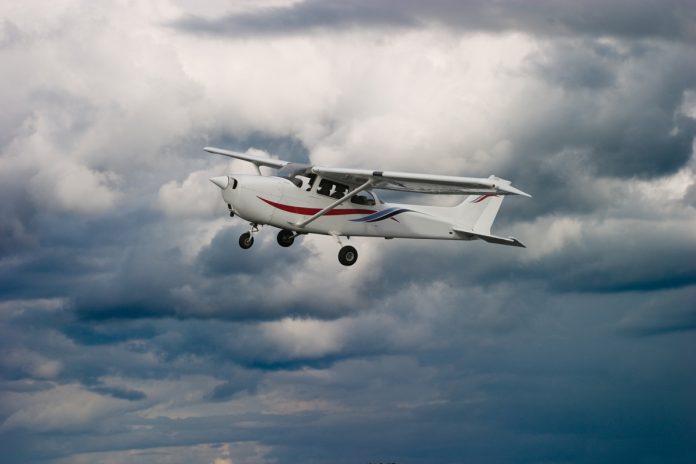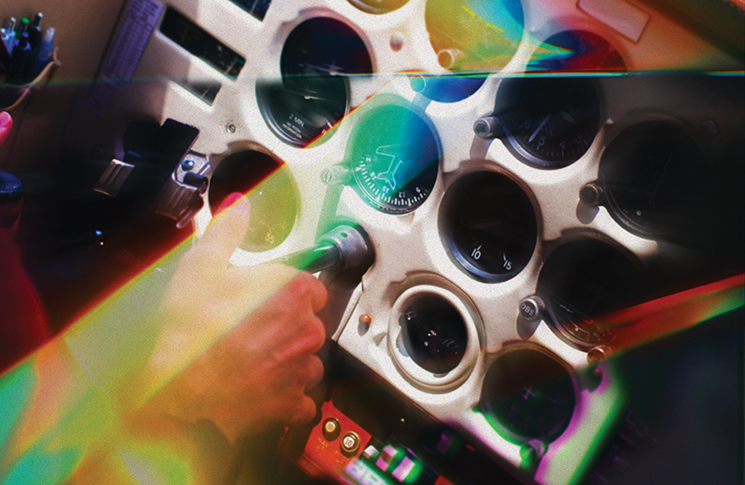How thorough flight planning can avoid the trap of VFR into IMC
The recent accidents of a Van’s Aircraft flying into cloud and breaking up near Charters Towers and the Cessna R182 Skylane RG that crashed in heavy fog near Archerfield airport serve as a stark reminder of the importance of knowing what to do if you find yourself in the dangerous situation of VFR into IMC.
Inadvertent VFR into IMC is a serious safety issue, and one that is consistently ranked as a top contributor to aviation accidents worldwide. Inexperienced pilots, and pilots who are not trained to rely upon their instruments, can suffer from severe disorientation and loss of spatial awareness, resulting in the inability to make informed decisions and perform critical tasks.
What can you do to avoid flying into IMC conditions?
‘The most critical thing is pre-flight planning. IMC incidents can most certainly be avoided with thorough planning and careful consideration of forecasted weather events, both before the flight and during the flight if circumstances are such that the plan need to be altered, based on the prevailing weather,’ explains David Wilson, Senior Accident Investigator at the Australian Transport Safety Bureau (ATSB).
‘One in 10 VFR-into-IMC cases lead to a fatal accident. That’s the unfortunate truth of the matter.’
When it comes to planning for the weather, Rebecca Ryan, Aviation Meteorologist at the Bureau of Meteorology, says there are a number of documents pilots should be aware of and utilising when planning their flights.
‘It’s important pilots get weather forecasts from the National Aeronautical Information Processing System (NAIPS), as well as the aerodrome forecast (TAF), and the graphical area forecast (GAF)’, Ryan says.
‘When consulting these documents, it is essential pilots don’t just look at the forecast for the few hours that might be their flying window, but rather the forecast for the whole period, so they know about any potential weather possibilities that might eventuate should delays occur.’
Ryan emphasises the importance of looking at the GAF chart in particular, which provides weather forecasts in six-hour blocks. This information is useful for pilots intending on flying greater distances over a longer period of time because they can determine the forecast at a particular location at the time they expect to be in the area.
The Bureau has released a helpful video explaining how the GAF works and how pilots should use it when planning flights.
Source: Bureau of Meteorology
What should you do if you find yourself flying into IMC?
The most important thing to do is not panic. These words may be cold comfort but, from a human factors point of view, as soon as panic sets in, it is very easy to become overwhelmed by the myriad of tasks you need to do. Your capacity to effectively diagnose a problem and work towards a rational and safe solution is drastically diminished when stress levels are high.
As we know, VFR pilots need visual reference points to orientate themselves. Therefore, flying into cloud – with no horizon visible – is a very confronting experience for a VFR pilot, explains Corporate Air Captain Allison Lane.
‘The biggest risk of flying into IMC is: what do you trust?’ she says.
‘Typically, spatial disorientation is what starts developing when we fly into cloud – that we start trusting what the fluid in our ears is telling us, which is not always a good indicator of what is correct. As a result, pilots really don’t know where they are in space.’
Lane suggests if a pilot sees a stormfront on their track, the best thing to do is perform a 180-degree turn, fly away from the weather system and head to a suitable aerodrome where it is safe to land. Flight plans need to be flexible to give you the best possible chance to avoid the weather system and fly to a safe destination.
Once on the ground, pilots can begin the process of replanning their flight around the weather, or ideally, once the storm passes.
This scenario is the best possible situation to be in. Sometimes, when the weather changes rapidly, you don’t have the luxury of simply turning around and flying to a safe destination.
You should be prepared and capable of adapting to unfolding weather situations in case conditions deteriorate further.
Another way to fly out of cloud is to use the aircraft’s systems. Modern GPS equipment often includes basic variations of ground proximity (GPWS) and terrain awareness warning systems (TAWS). Although individual commercial brands are largely unregulated, they can still offer some degree of obstacle awareness in the absence of any visual references. Before using uncertified GPWS/TAWS, check you are adequately trained to use them properly.
For trained IFR pilots, instigating an effective visual scanning technique is a good way to orientate yourself during flight. But VFR pilots should be wary about this technique, as your natural inclinations might be different to what your indicators are reading, further adding to the confusion. Watch the below video about how your instruments and your brain compete, providing you inconsistent and contradictory information.
Source:CASABriefing
Despite the usefulness of in-built systems, pilot vigilance should always be the first priority. The best advice a VFR pilot can take is – if bad weather is forecast, double-check the current forecast and, if in doubt, cancel the flight rather than risk your life. It’s not worth it.
To find out more about inadvertent VFR into IMC, check out the weather and forecasting and flight planning topics on CASA’s Pilot safety hub.
Don’t forget to watch the AvSafety investigation about deteriorating weather, where the panel discuss a VFR-into-IMC close call incident.
Source:CASABriefing






As a VFR-only pilot, I’ll do my utmost best to avoid flying into IMC. But if it ever did happen, I would youse the auto pilot to get out of the clouds. I didn’t see that option mentioned in the article, hence my comment.
As a Briefing Officer (Bankstown ATC in the 70s and 80s) I often briefed VFR pilots on non-VMC conditions where they were intending to go and the comment was almost invariably, “I’ll go and have a look.” I read about some of them in the newspapers the next day and made a promise to myself that if I didn’t like the look of what was ahead, I’d turn back.
I was flying WG-CB-BK in good weather until approaching the escarpment between Wollongong and Sydney with what looked like very low cloud on the terrain ahead, turned away and diverted to Wollongong. I caught the XPT to Sydney and it was obvious from the train that VFR would not have been possible.
The aircraft was VFR only and was stuck there for ten days before the weather improved.
It’s better to use others’ experience than your own in these circumstances.
Also no mention in the article of using the radio to contact ATC and confirm position or ask for help!
I’m a flight instructor and only watching that video today did I learn that SCT on a GAF does not mean the same as SCT on a TAF. Having now understood that 50-75% of the area could have showers and low cloud, that would absolutely change my go or no-go decision when looking at the TAF from that incident. I wonder how many others also had this misconception and perhaps a re-think of things is required.